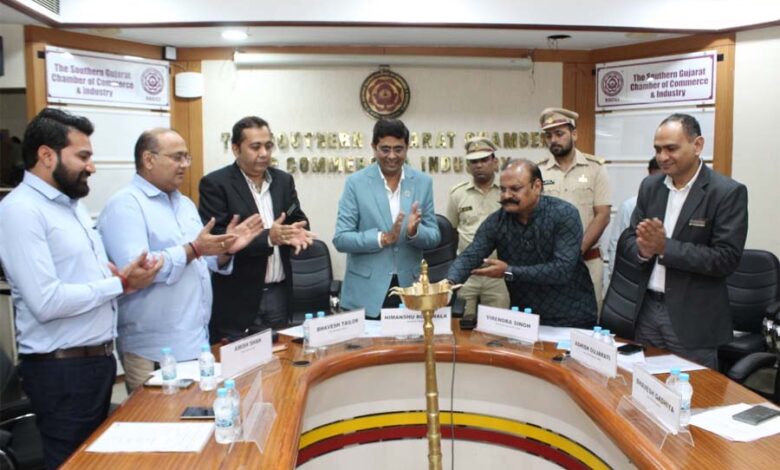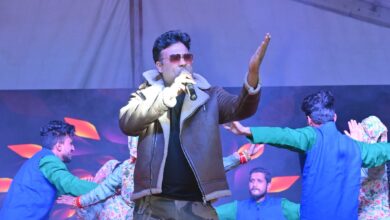Surat : Export-Import Management (Certificate and Diploma) course launched by Chamber of Commerce

The demand for textiles and diamonds and other products from Surat has increased in various countries including America and now the world is showing priority to buy products from India.
The course launched by the Chamber will prepare new entrepreneurs in the export-import sector: Additional DGFT Virendra Singh
Dakshin Gujarat Chamber of Commerce and Industry has launched Export-Import Management course under SGCCI Education and Skill Development Centre. It was inaugurated at Samriddhi, Nanpura, Surat. Joint Director General of Foreign Trade – Surat Additional DGFT Virender Singh was present at the inauguration ceremony. He made a presentation about India’s trade policy and detailed about the simplification and online process for export-import.
Additional DGFT Virender Singh said that the policy of the Government of India has been export oriented. The targets set by the government for exports are nearing completion ahead of schedule. The state of Gujarat in India has now come first in terms of exports. The demand for textiles and diamonds and other products from Surat has increased in various countries including America and now the world is showing priority to buy products from India.
A few months ago, the Global Textile Trade Fair was organized by the Chamber of Commerce in the US. This has increased the demand for Surat fabrics in America. Therefore, the pace of export from Surat is increasing rapidly. Apart from this, he congratulated the Export-Import Management course started by the Chamber of Commerce and said that this course will lead to better work in the Export-Import sector. Along with this, new entrepreneurs will also be created in this field.
Chamber President Himanshu Bodawala in the welcome address said that Chamber of Commerce always conducts industry-oriented activities for the development of trade and industry. For better work in the export-import sector, a six-month certificate course and one-year diploma course have been started by the chamber. This course will prepare skilled exporters and importers in the field of export-import and through them the pace of exports from South Gujarat will be accelerated.
Ashish Gujrathi, former president of the chamber and advisor to academic courses, said that the Indian government has formulated policies so that MSME manufacturers can export directly. So now small entrepreneurs producing various products will be able to export directly. As part of this effort, the Chamber organized the Global Textile Trade Fair in the USA. In which 95% MSME manufacturers of Surat participated. He further said that Surat district ranks second in exports from various districts of India. Therefore, he encouraged the students to pursue export-import sector as there are huge opportunities in export sector.
Amrish Bhatt, Chairman, SGCCI Education and Skill Development Center said that there is a lot of potential in the export-import sector from South Gujarat. Therefore, through this course, an important step has been taken by the Chamber in this direction. As a part of which Chamber is running other courses related to Textile and Management.
The entire program was conducted by Bhavesh Taylor, Honorary Minister of the Chamber. Chamber’s Group Chairman Amish Shah, Chamber member Bhagirath Kalathia and Faculty Professor of Export-Import Management Course Dr. Darshan Shah and Seemanjit Singh and students were present in the program. In the end, the Honorary Treasurer of the Chamber, Bhavesh Gadhia, concluded the program by expressing his gratitude for the survey.
(function (d, s, id) {
var js, fjs = d.getElementsByTagName(s)[0];
if (d.getElementById(id))
return;
js = d.createElement(s);
js.id = id;
js.src=”https://connect.facebook.net/en_GB/sdk.js#xfbml=1&version=v3.2″;
fjs.parentNode.insertBefore(js, fjs);
}(document, ‘script’, ‘facebook-jssdk’));





